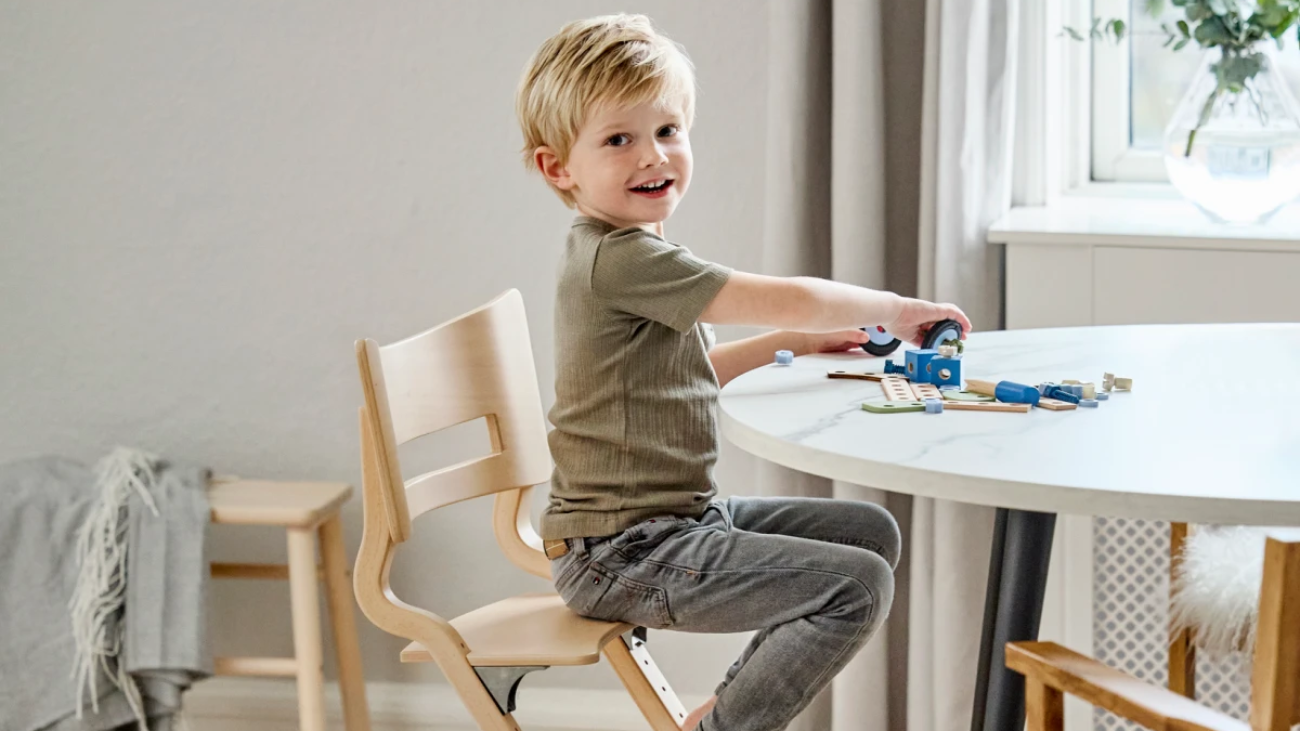Children’s furniture, especially chairs, is critical to their comfort, posture, and development. Whether it’s for the home, classroom, or study area, choosing the right chair can have lasting benefits on a child’s overall well-being. In this guide, we will walk you through the essentials of selecting the perfect chairs for children, ensuring they are comfortable, safe, and appropriate for their needs.
Why Choosing the Right Chair for Children Is Important:
The chairs children use daily, be it at home or in school, impact their posture, focus, and overall health. Growing bodies need furniture that supports their physical development, promotes good posture, and minimizes discomfort. Using poorly designed chairs can lead to slouching, backaches, and even long-term posture issues. By investing in the right chairs for children, you create an environment that promotes healthy growth and learning. These chairs also provide the comfort children need to stay engaged during study or play.
Key Factors to Consider When Choosing Chairs for Children:
Selecting the best chair for children involves several important considerations
- Size and Proportions: Children’s chairs should be sized according to their age and height. If a chair is too large or too small, it can lead to discomfort and improper posture. The chair should allow the child’s feet to rest flat on the floor while their knees are at a 90-degree angle.
- Ergonomics: Ergonomically designed chairs are crucial for maintaining healthy posture. Look for chairs with adjustable seat height, backrest support, and armrests. These features help children maintain a proper sitting posture, reducing the strain on their back and neck.
- Material and Durability: Children can be tough on furniture, so it’s essential to choose chairs made from durable materials that can withstand daily wear and tear. Look for chairs with sturdy frames, easy-to-clean fabrics, and non-toxic materials.
- Comfort: Comfort is key when it comes to children’s chairs. Soft cushions and breathable materials can make a big difference, especially during long study sessions or playtime.
- Safety: Safety is paramount when selecting children’s furniture. Ensure that chairs have rounded edges to avoid injuries, and opt for sturdy chairs with a stable base to prevent tipping. Also, consider weight limits to ensure the chair is suitable for your child’s size.
Conclusion:
Choosing the perfect chair for your child is an important investment in their comfort, health, and development. Whether for study, play, or relaxation, the right chair should support proper posture, be durable, and offer safety and comfort. At Meta Furniture, we offer a variety of stylish, functional chairs designed specifically for children, ensuring they can thrive in any environment. Make the right choice today for a healthier and happier tomorrow! For more Amazing blogs follow Finbiz.
FAQs:
What is the best chair height for children?
The best chair height for children allows them to sit with their feet flat on the floor and their knees at a 90-degree angle. An adjustable chair is ideal, as it can grow with your child and be adjusted to suit their height.
Are ergonomic chairs necessary for children?
Yes, ergonomic chairs are beneficial for children, especially for those who spend long hours studying or sitting. Ergonomic chairs support proper posture, reducing the risk of developing back pain or posture-related issues.
What materials are best for children’s chairs?
Durable, easy-to-clean materials are ideal for children’s chairs. Look for chairs made from non-toxic plastics, sturdy wood, or metal frames. Cushioned chairs with washable fabric covers are also a good option for added comfort.
How do I choose the right chair for my child’s study area?
Choose an adjustable chair, that provides proper back support, and allows your child to sit with their feet flat on the ground. A chair with soft padding and ergonomic design will help your child stay comfortable and focused during study sessions.
Can children use adult-sized chairs?
While some older children may be able to use adult-sized chairs, it’s generally better to select a chair designed specifically for children. Chairs that are too large can lead to poor posture and discomfort.




